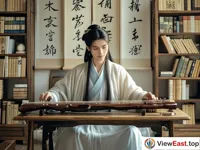

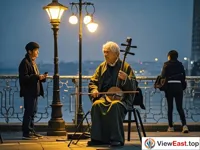
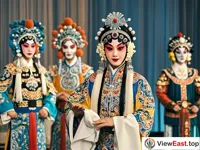

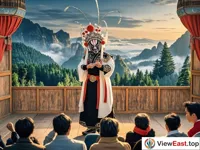

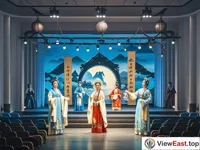

Introduction
Chinese classical music and dramatic arts are the shining pearls in the treasure trove of Chinese culture. From the melodious guqin to the splendid facial makeup of Peking Opera, from the flowing sounds of the guzheng to the delicate tunes of Kunqu Opera, these art forms have traversed a thousand years, still radiating timeless charm.
Chinese Classical Music
Chinese classical music, with its unique scales and playing styles, showcases the musical aesthetics and philosophical thoughts of the Chinese nation.
Guqin: The Sound of Antiquity
The guqin is one of the oldest plucked instruments in China, with a deep and restrained tone. The playing style emphasizes a state of "coolness from a tranquil heart." Classic guqin pieces such as "High Mountain and Running River" and "Guangling Melody" are timeless masterpieces.
Guzheng: Flowing like Clouds and Rivers
The guzheng is known for its broad range and rich expressiveness. Its music often takes natural landscapes and folk tales as themes, such as "Fisherman's Song at Dusk" and "The Cold Crow Plays with Water," filled with poetic charm.
Erhu: A Weeping and Sobbing Melody
The erhu, with its distinctive timbre, excels at expressing deep emotions. Pieces like "The Moon Reflected in Erquan" and "Listening to the Pines" tell touching stories with their sounds.
Chinese Classical Drama
Chinese classical drama, with its diverse performance forms and profound cultural heritage, showcases the life philosophy and aesthetic taste of the Chinese nation.
Peking Opera: The Quintessence of Chinese Culture
Peking Opera is the most influential Chinese opera genre, known for its rich roles, exquisite facial makeup, and exaggerated performances. The four great Peking Opera dramas such as "Farewell My Concubine" and "The Legend of the White Snake" are beloved by audiences.
Kunqu Opera: The Mother of a Hundred Operas
Kunqu Opera is famous for its graceful singing style and elegant performance. Representative works like "The Peony Pavilion" and "The Palace of Eternal Life" demonstrate immense artistic value.
Regional Operas: A Hundred Flowers Blooming
China's regional operas are diverse, such as the face-changing in Sichuan Opera, the melodious tunes of Huangmei Opera, and the lyricism of Yue Opera. Each type of opera has its unique charm and regional characteristics.
The Integration of Music and Drama
The combination of music and drama is an essential characteristic of Chinese classical arts. In dramatic performances, music not only accompanies but also plays a vital role in expressing emotions and advancing the plot.
Singing and Instrumental Performance
In opera, singing and instrumental music complement each other, creating a unique artistic atmosphere. Different singing styles and playing techniques express various emotions and narratives.
Gestures and Expressions
An actor's gestures and expressions are closely connected to the rhythm and melody of the music. Guided by music, actors can better reveal the inner world of their characters.
Conclusion
Chinese classical music and dramatic arts are the crystallization of the wisdom of the Chinese nation. They carry rich historical and cultural information and contain profound philosophies of life. Gaining an in-depth understanding of these art forms allows us not only to better comprehend Chinese culture but also to find solace in modern life.
Exploring Chinese classical music and dramatic arts, we can learn how to draw inspiration from ancient arts; studying the integration of music and drama, we can learn how to seek innovation and inheritance in contemporary creation. The essence of these art forms is not only the enjoyment of beauty but also the transmission of culture.